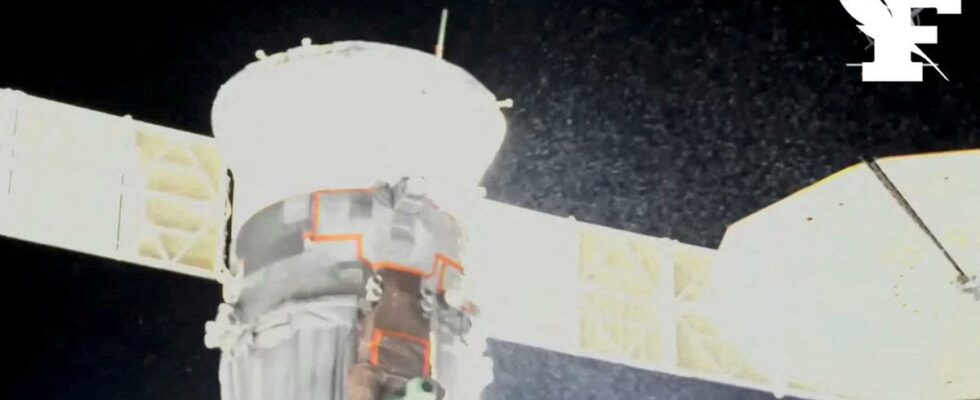A damaged capsule in mid-December in orbit would no longer be able to ensure the safe return of its crew.
Russia is not going to take any risks: damaged, the Soyuz MS-22 capsule docked to the International Space Station (ISS) will come down without a passenger on board. An impact on December 14 had punctured its cooling system, causing a 4mm opening in the outer radiator shroud and a hole of less than a millimeter in one of its pipes.
The Russians attribute the incident to a micrometeorite impact. Experiments carried out on the ground on aluminum plates show that a 1 mm particle launched at 25,000 km / h could have caused the damage observed, assured Sergei Krikaliov, former cosmonaut and responsible for the inhabited at Roscosmos. The hypothesis of a microdebris of human origin seems to have been ruled out, without any particular explanation. Recall that Russia fired an anti-satellite missile in November 2021, which created a cloud of potentially dangerous debris for the ISS. The meteorite scenario, entirely credible, is more consensual on the geopolitical level.
Whatever the origin of the impact, much of the coolant in the capsule, if not all of it, had then escaped into space. The temperature on board the ship then rose to 30°C then 40°C before a makeshift ventilation system was put in place by the astronauts.
Question of life or death
After various tests and scenarios, the Russian space agency Roscosmos announced on Wednesday that it preferred to give up using the spacecraft to bring back to Earth the two Russian cosmonauts Sergei Prokopiev and Dimitri Peteline as well as the American Frank Rubio. Engineers fear that the temperature could climb to around 40°C during the six-hour return journey. This would not simply be uncomfortable: with the humidity prevailing in the cabin, this could represent a danger for the health of the astronauts, the perspiration no longer allowing the excess body heat to be evacuated effectively. It could also compromise the proper functioning of electronic equipment.
It is therefore aboard a new Soyuz capsule that the crew will return to Earth. It is in fact the MS-23 capsule which was to take off on March 16. It will make its outward journey empty. His departure has been brought forward to February 20. What would happen in the event of a major incident before the arrival of this “rescue” vessel? A priori, the crew would take the risk of boarding the damaged capsule. However, it would have to be a matter of life or death. Engineers are studying the possibility of bringing one or two additional passengers aboard SpaceX’s Crew Dragon capsule to limit the number of passengers, and therefore the temperature, on board the Soyuz. If all goes as planned, the MS-22 capsule should return to Earth empty in early March, after docking its replacement.
In order to ensure continuity of presence on board the ISS, Sergei Prokopiev, Dimitri Peteline and Frank Rubio should remain in orbit for several additional months. NASA allows itself two weeks to revise in more detail the schedule of the next missions.
SEE ALSO – Space: an impressive leak affects a Soyuz spacecraft docked at the ISS
